Basically all discharge based laboratory sources for photo electron spectroscopy produce a range of different emission lines which compromise the signal to noise performance and generate unwanted „ghost peaks“ in the spectrum. A VUV monochromator allows to select one specific emission line out of the emission specta generated in the VUV lamp.
A dedicated monochromator is now available for our popular HIS 13 and HIS 14 HD VUV sources: The FOCUS HIS Mono is based on a patented zone plate arrangement to separate the two prominent lines He I (21.2 eV) and He II (40.8 eV) from the rest of the emission spectrum. In particular the He I – ß, ƴ and He II – ß satellites are removed.
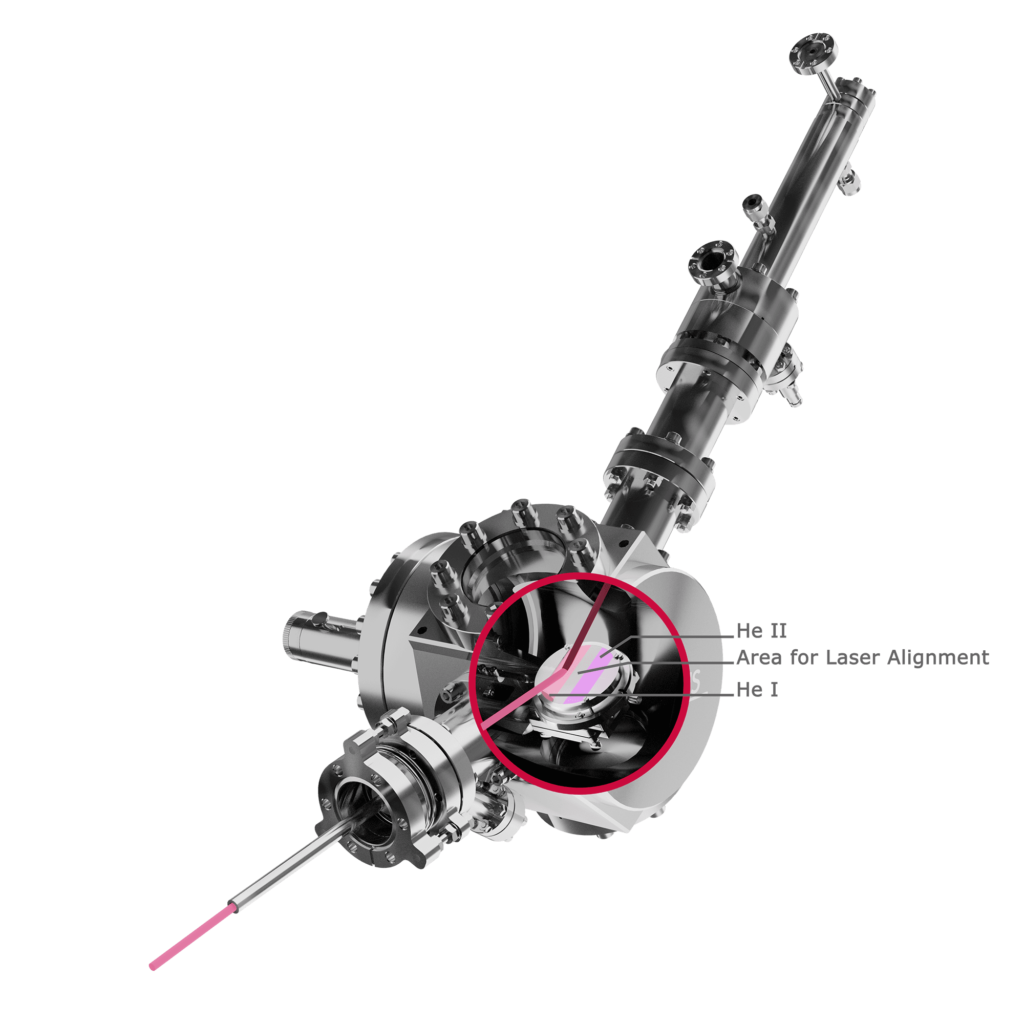
• Dispersive element with 20 %
transmission for He I and II
• Patented zone plate arrangement
• Precise alignment with line of
sight viewport using LED
• Operating pressure down to
10-10 mbar range
• To be combined with HIS 13 & HIS 14 HD
• Integrated pumping port
The zone plate has different areas for the He I- and He II line respectively. A z-shift moves the relevant area into the light path. The reflection angle of the zone plate is energy dependent and an aperture cuts out the emission line of interest. A third area on the zone plate provides the path for visible light of a LED in order to adjust the beam spot position and spot shape on the sample.
A module for HIS 13 and HIS 14 HD
The FOCUS HIS Mono can be combined with the HIS 13 and HIS 14 HD VUV – lightsources.
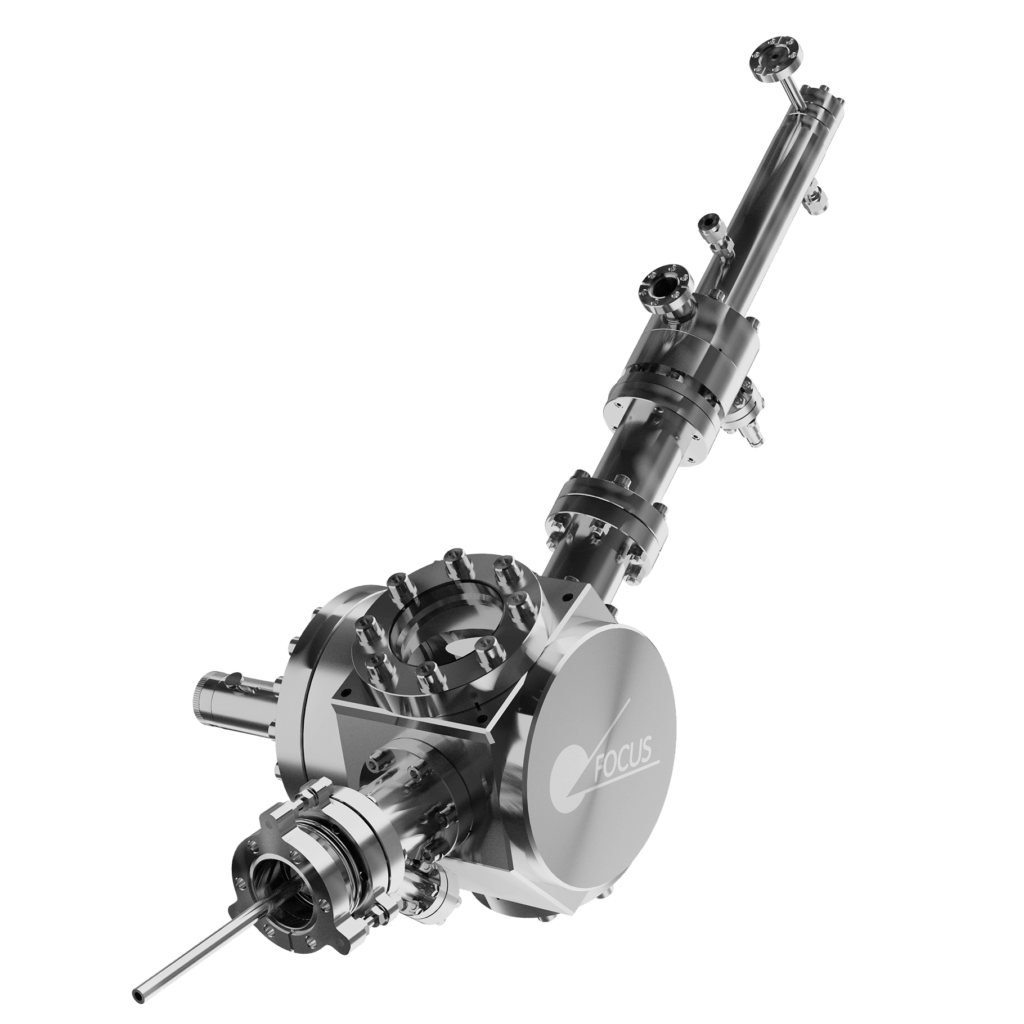
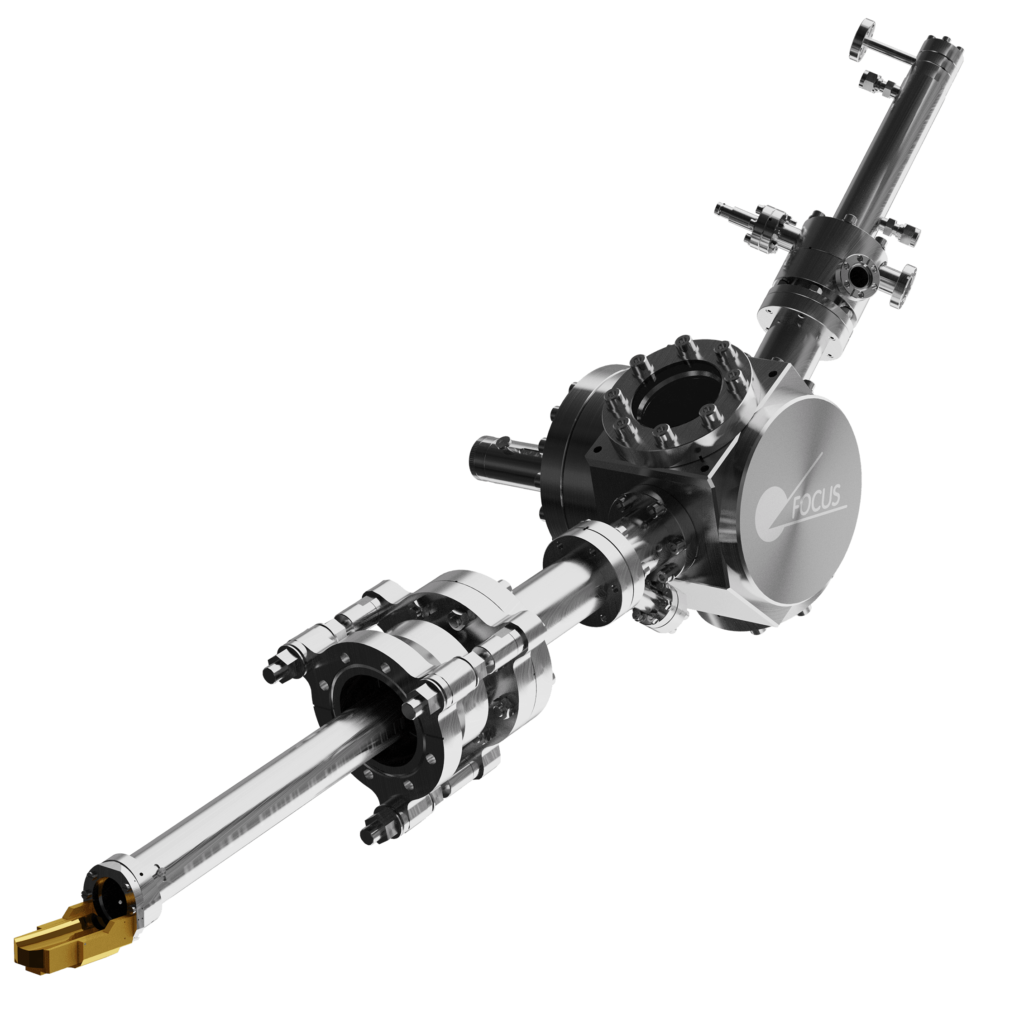
Technical Drawings
The drawings and measures of the HIS 14 HD with monochromator.

Spectral improvement with the monochromator
Photoelectron spectrum accross the Fermi edge of W (100) were acquired with and without monochromatized He I exitation. A zoom reveals photoelectron peaks generated by HeI-ß and HeI-ƴ satellites. With the monochromatized source the peaks induced by the satellites are removed. The spectra were measured with a FOCUS CSA analyzer.
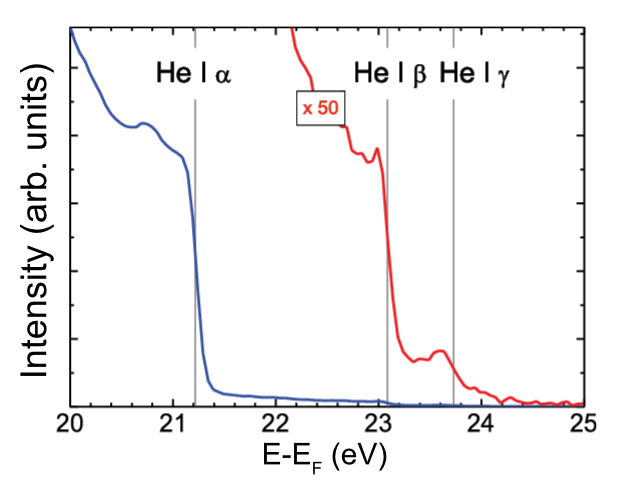
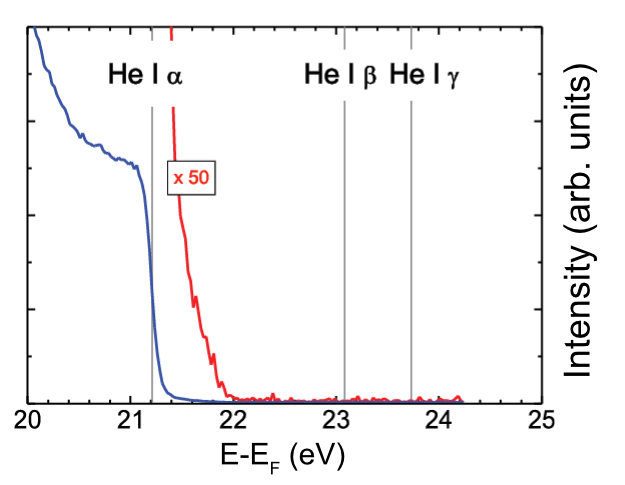
The benefit to remove satellite induced ghost peaks becomes even more evident when looking at momentum microsocopy with kx – ky images as shown below with a PEEM with IEF ( Imaging Energy Filter) :
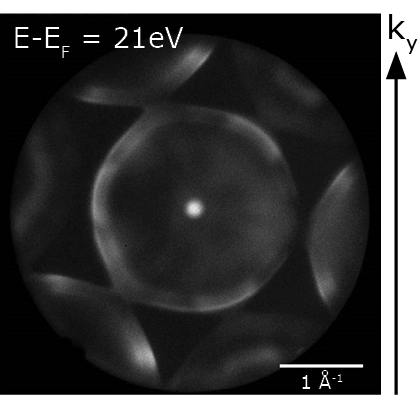
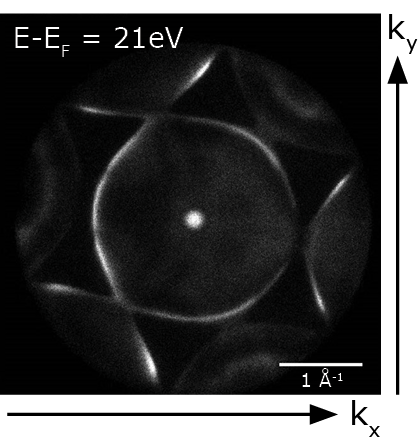
Technical Specifications
This table shows the technical specifications of the monochromated versions of our VUV sources.
| Model | HIS 13 Mono | HIS 14 HD Mono | HIS 14 HD 200 Mono |
|---|---|---|---|
| Photo current He I / He II | > 80/10 nA* | > 40 nA**/> 12 nA** | > 40 nA**/12 nA** |
| Useful gas discharge lines: | He I/II | He I/II | He I/II |
| Light spot diameter: | working distance depending | < 300µm | < 600µm |
| Photon line width | < 2 meV ( He I radiation) | < 2 meV ( He I radiation) | < 2 meV ( He I radiation) |
| Photon flux density: | working distance depending (unfocused source) | > 50 times compared to an unfocused source | > 13 times compared to an unfocused source |
| Pumping | 2-, 3- or 4- stage differential pumping | 2-, 3- or 4- stage differential pumping | 2-, 3- or 4- stage differential pumping |
| Working distance | spot size depending | ca. 70 mm | ca. 170 mm |
| Insertion depth: | Customized (to be defined) | Customized (to be defined) | Customized (to be defined) |
| Mounting flange | CF40 | CF63 or CF100 | CF40 |
| Operating pressure | Down to 10-11 mbar range | Down to 10-11 mbar range | Down to 10-11 mbar range |
| Adjustment & Discharge control | Via backside viewport | Via backside viewport | Via backside viewport |
| Cooling: | Water cooling | Water cooling | Water cooling |
| Bake out temperature: | Up to 250°C | Up to 250°C | Up to 250°C |
| Plasma Ignition: | Automatic | Automatic | Automatic |
| Available Capillaries (mm): | 0.8/1.2/1.7 (standard) | 0.8/1.2/1.7 (standard) | 0.8/1.2/1.7 (standard) |
**photo current with VUV diode
